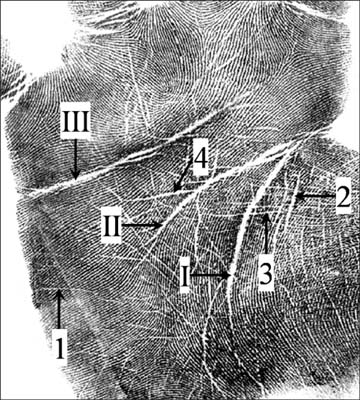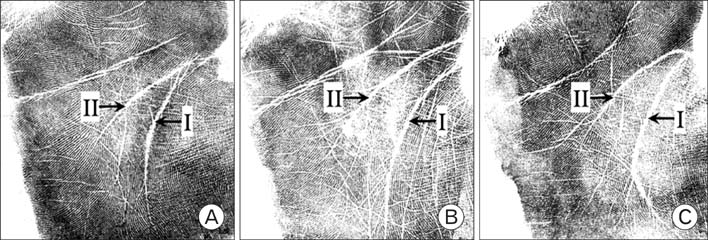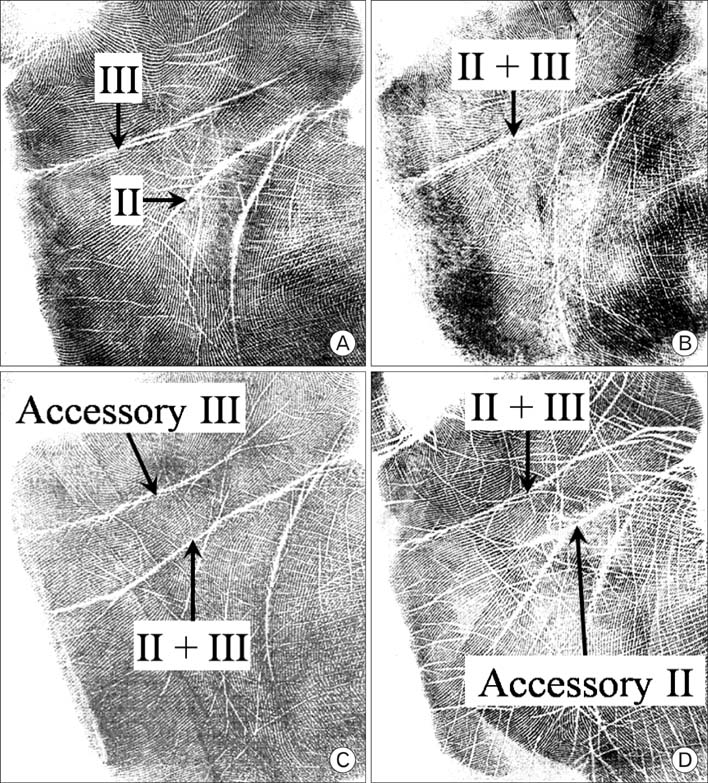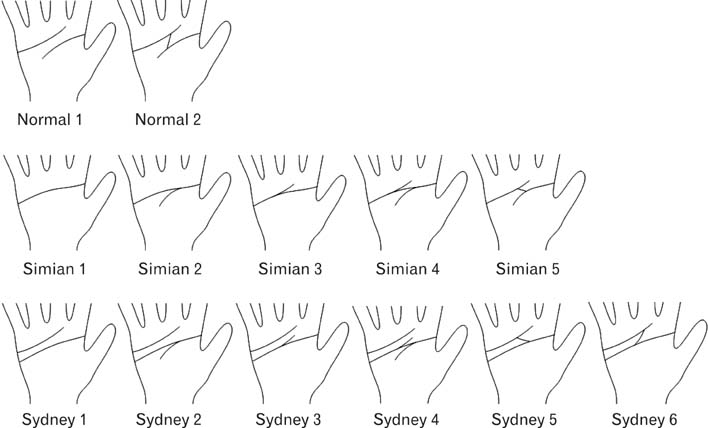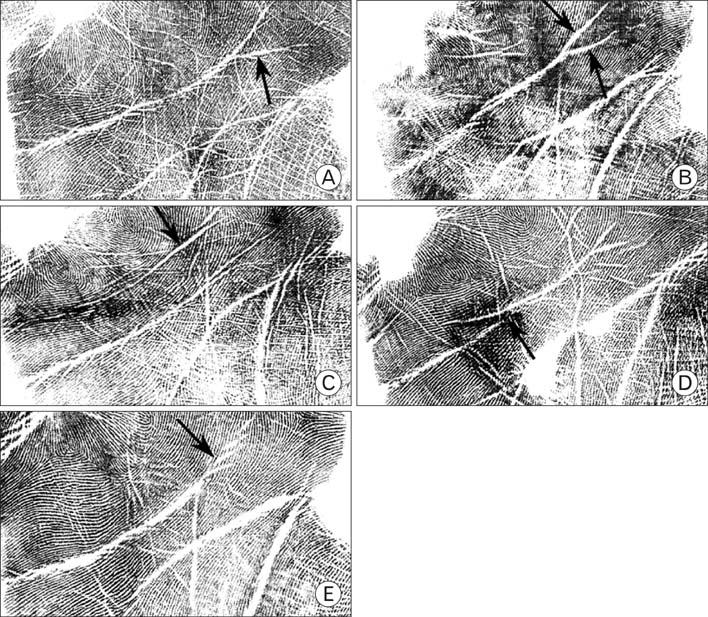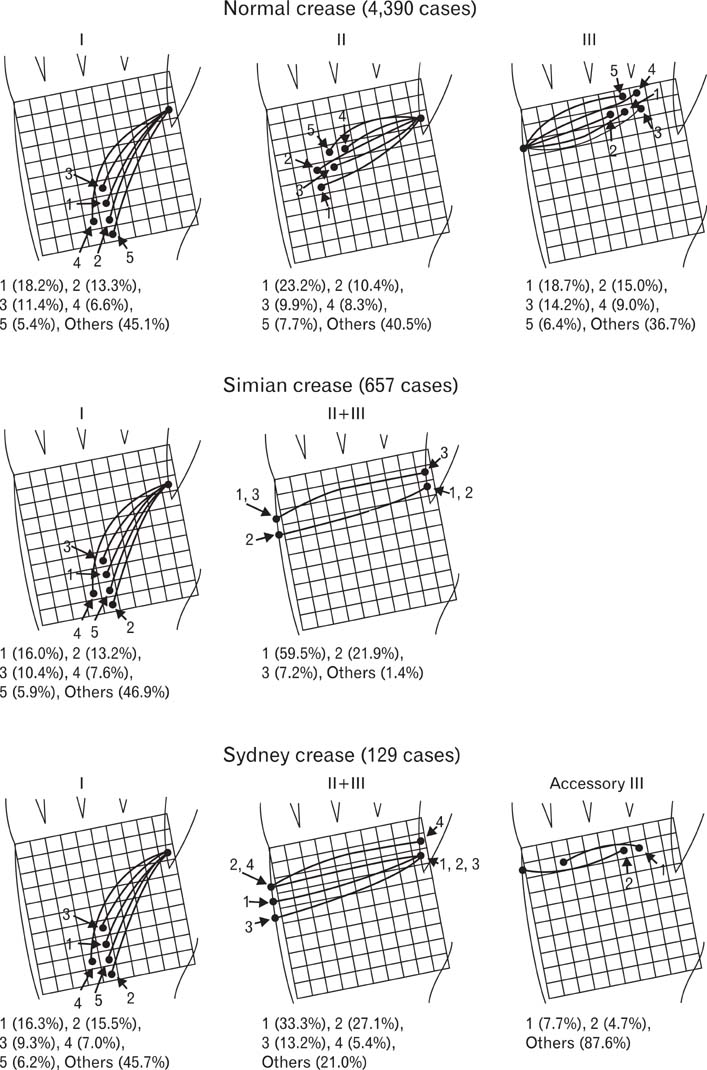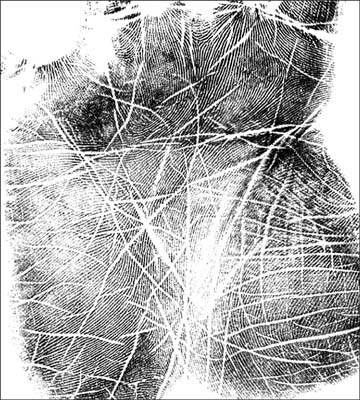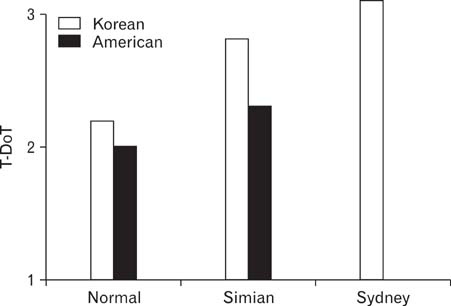Anat Cell Biol.
2010 Jun;43(2):169-177. 10.5115/acb.2010.43.2.169.
Improved analysis of palm creases
- Affiliations
-
- 1Department of Anatomy, Dongguk University School of Medicine, Gyeongju, Korea.
- 2Department of Anatomy, Ajou University School of Medicine, Suwon, Korea. dissect@ajou.ac.kr
- KMID: 2168891
- DOI: http://doi.org/10.5115/acb.2010.43.2.169
Abstract
- Palm creases are helpful in revealing anthropologic characteristics and diagnosing chromosomal aberrations, and have been analyzed qualitatively and quantitatively. However, previous methods of analyzing palm creases were not objective so that reproducibility could not be guaranteed. In this study, a more objective morphologic analysis of palm creases was developed. The features of the improved methods include the strict definition of major and minor palm creases and the systematic classification of major palm creases based on their relationships, branches, and variants. Furthermore, based on the analysis of 3,216 Koreans, palm creases were anthropologically interpreted. There was a tendency for palm creases to be evenly distributed on the palm, which was acknowledged by the relationship between major and minor creases as well as by the incidences of major creases types. This tendency was consistent with the role of palm creases to facilitate folding of palm skin. The union of major palm creases was frequent in males and right palms to have powerful hand grip. The new method of analyzing palm creases is expected to be widely used for anthropologic investigation and chromosomal diagnosis.
Keyword
MeSH Terms
Figure
Cited by 1 articles
-
Prevalence of palmar crease patterns and associated factors among students at University of Gondar, Northwest Ethiopia
Daniel Gashaneh Belay, Misganaw Gebrie Worku, Meselech Ambaw Dessie, Yared Asmare, Molla Taye
Anat Cell Biol. 2022;55(2):161-169. doi: 10.5115/acb.21.251.
Reference
-
1. Alter M. Variation in palmar creases. Am J Dis Child. 1970. 120:424–431.2. Caplan RM. How fingerprints came into use for personal identification. J Am Acad Dermatol. 1990. 23:109–114.3. Chaube R. Palmar creases in population studies. Am J Phys Anthropol. 1977. 47:7–9.4. Chung MS, Kim YS, Kim HJ, Sohn HJ, Han HS. Dermatoglyphic characteristics of the Korean patients with numeral aberrations of chromosome. Korean J Phys Anthropol. 2000. 13:31–38.5. Dar H, Jaffe M. Dermatoglyphic and palmar-crease alterations as indicators of early intra-uterine insult in mental retardation. Dev Med Child Neurol. 1983. 25:53–59.6. Dar H, Schmidt R. Topographic approach for analysis of palm crease variants. J Med Genet. 1976. 13:310–313.7. Dar H, Schmidt R, Nitowsky HM. Palmar crease variants and their clinical significance: a study of newborns at risk. Pediatr Res. 1977. 11:103–108.8. Davies PA. Sex and the single transverse palmar crease in newborn singletons. Dev Med Child Neurol. 1966. 8:729–734.9. Edelstein J, Amylon M, Walsh JA. Dermatoglyphics and acute lymphocytic leukemia in children. J Pediatr Oncol Nurs. 1991. 8:30–38.10. Eswaraiah G, Bali RS. Palmar flexion creases and dermatoglyphics in leprosy patients. Int J Lepr Other Mycobact Dis. 1978. 46:56–60.11. Jones KL, Robinson LK, Bakhireva LN, et al. Accuracy of the diagnosis of physical features of fetal alcohol syndrome by pediatricians after specialized training. Pediatrics. 2006. 118:e1734–e1738.12. Oorthuys AM, de Vaan GA, Behrendt H, Geerts SJ. Palmar flexion creases in childhood neoplasia. Cancer. 1979. 43:749–759.13. Popich GA, Smith DW. The genesis and significance of digital and palmar hand creases: preliminary report. J Pediatr. 1970. 77:1017–1023.14. Purvis-Smith SG, Menser MA. Dermatoglyphics in adults with congenital rubella. Lancet. 1968. 2:141–143.15. Tay JS. The genetics of palmar creases. A study in the inheritance of liability estimated from the incidence among relatives. Ann Hum Genet. 1979. 42:327–332.

